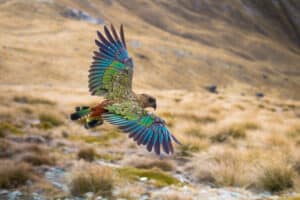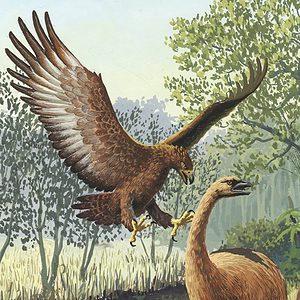The official Vermont State Bird is the hermit thrush (Catharus guttatus). This small, mostly brown bird with a beautifully melodic, flute-like voice can be found all over the state. Celebrated by poets, the hermit thrush is one of the most beloved animals in Vermont. This bird belongs to the Turdidae family of thrushes. The hermit thrush, sometimes called by the nickname American nightingale, belongs to the Catharus genus of nightingale thrushes native to the Americas. Although the hermit thrush only lives in the state during the warmer months, the legislature adopted it in 1941 as the official State Bird of Vermont. No other state claims this species as its symbol.
Where Does the State Bird of Vermont Live?
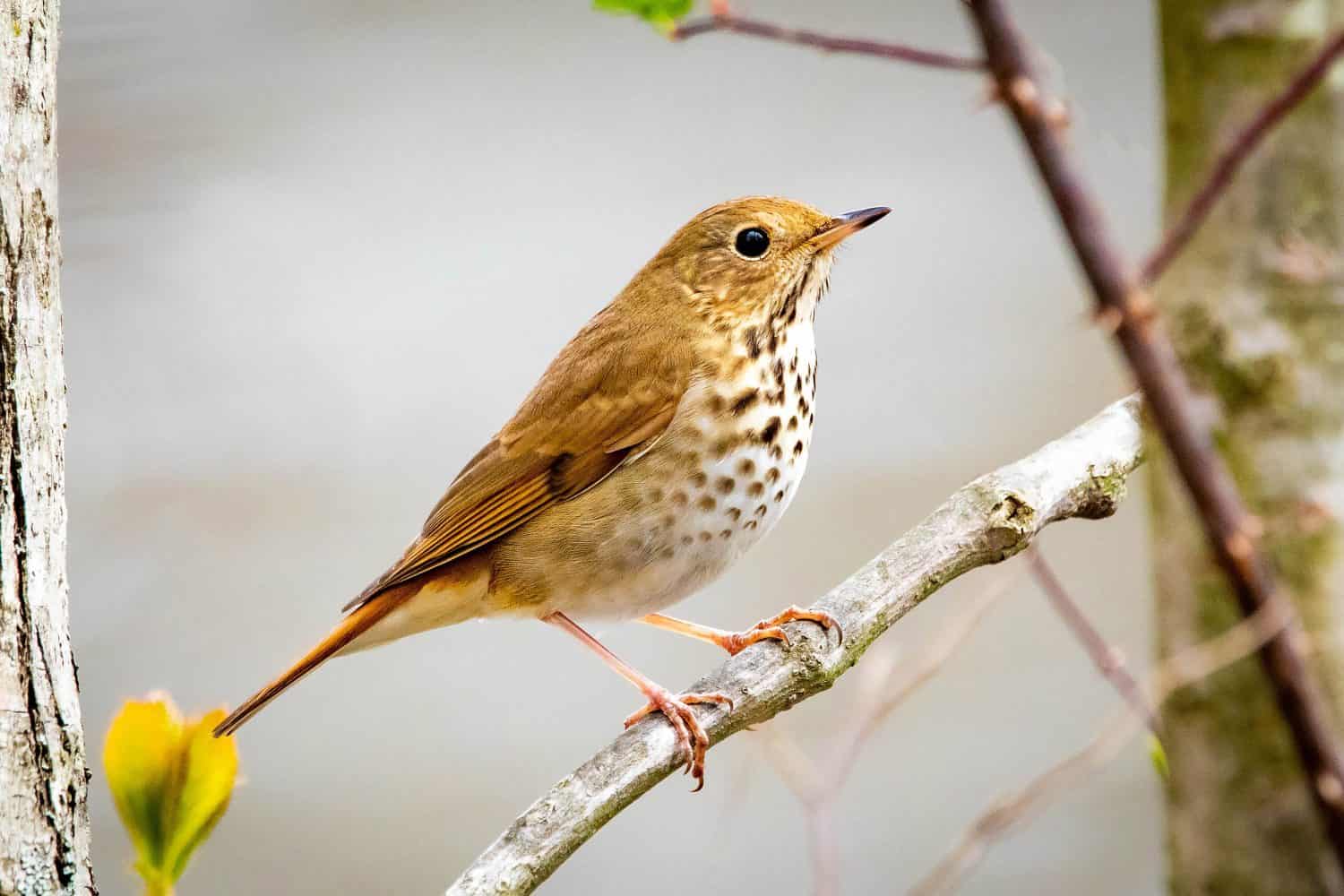
Hermit thrushes usually live in coniferous or mixed forests near clearings.
©Photo Spirit/Shutterstock.com
The hermit thrush ranges from Alaska in the north to the Central American nation of Guatemala in the south. In Vermont, hermit thrushes breed in the warmer months and then migrate south during the winter. These birds generally live in wooded areas near clearings throughout the state.
Diet
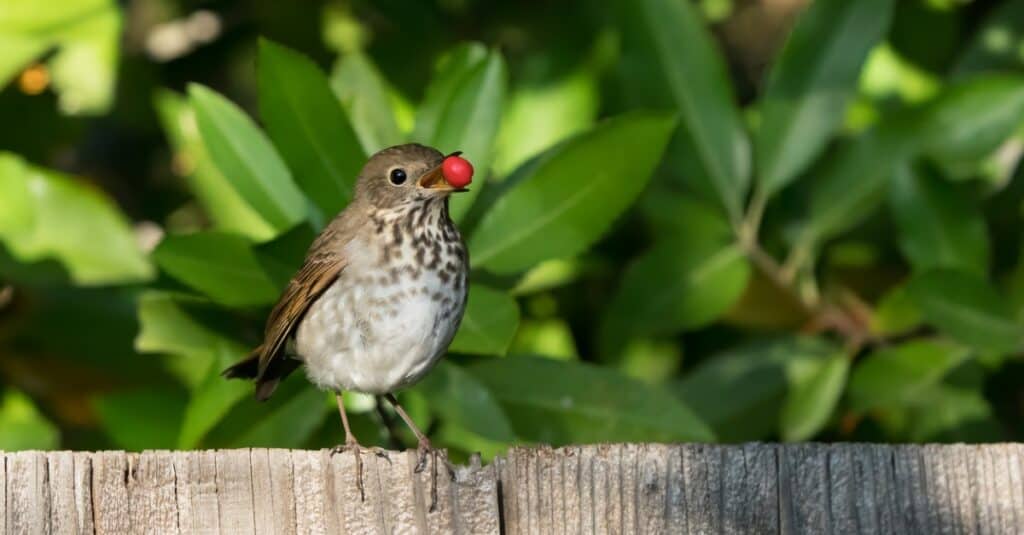
The hermit thrush eats mainly fruits as it prepares for winter.
©iStock.com/Wendy/Jeff Sparks/Torquemada
The state bird of Vermont is an omnivore that forages mainly on the forest floor during its breeding season. The hermit thrushes eat a variety of invertebrates, including insects such as ants, beetles, crickets, and grasshoppers, as well as spiders, snails, slugs, and worms. They may also dine on small reptiles or amphibians, including salamanders, that they find in the forest.
In the fall and winter, when the hermit thrush prepares to migrate to the south, its diet shifts mainly to fruit. These birds eat a number of different types of fruits, from grapes and raspberries to elderberries, pokeberries, and even mistletoe.
Where Does the State Bird of Vermont Nest?
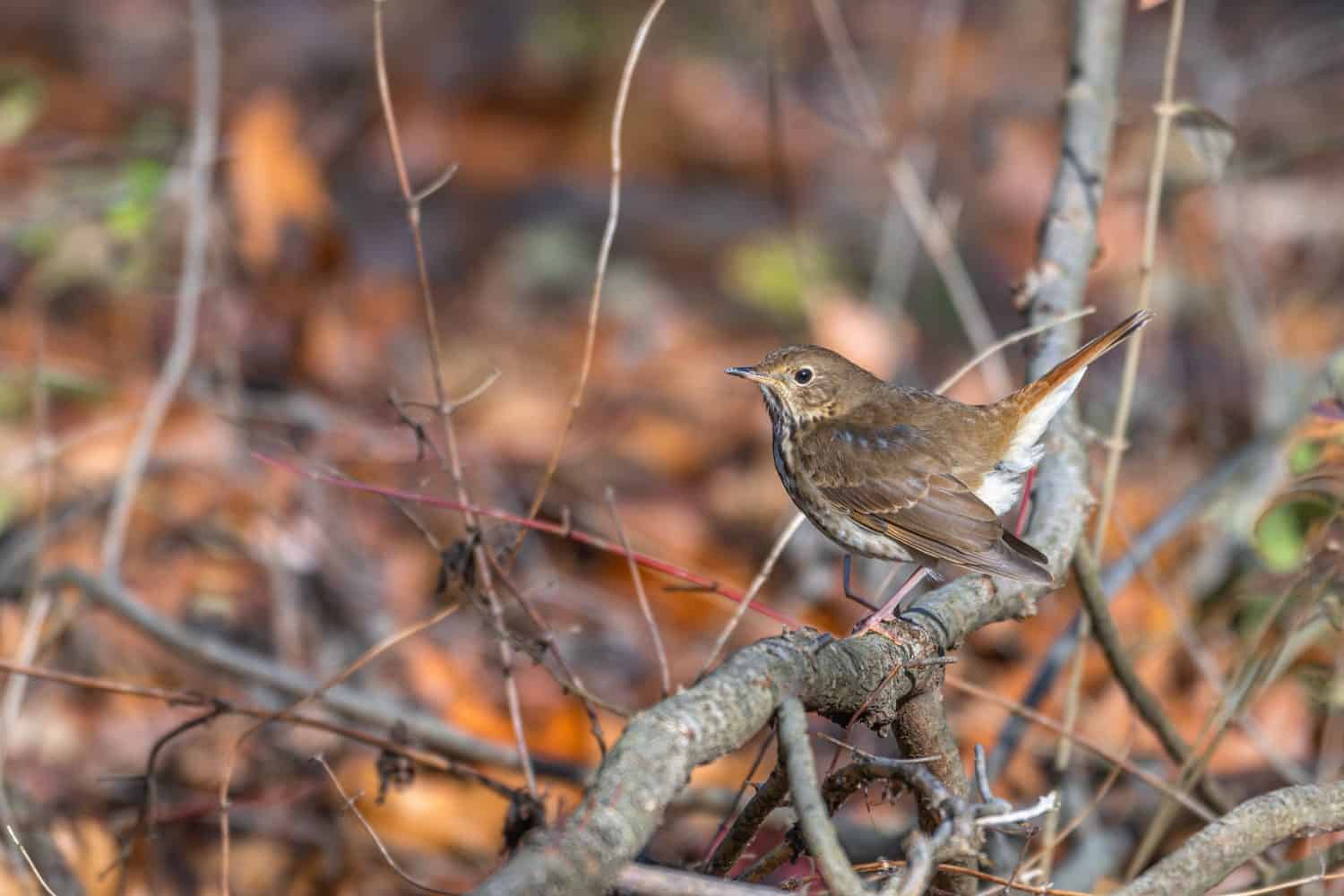
Hermit thrushes that live in the east usually nest on the forest floor.
©Lecia Michelle/Shutterstock.com
Hermit thrushes in Vermont usually nest on the ground in forested areas near openings or on the forest edges. They prefer to nest in hidden places below small conifer trees or shrubs. Females build their cup-shaped nests using vegetation such as grass, leaves, and pine needles, lined with softer plant materials. They may reinforce the outside of the nest with pieces of wood, lichen, and mud.
Hermit Thrush Eggs
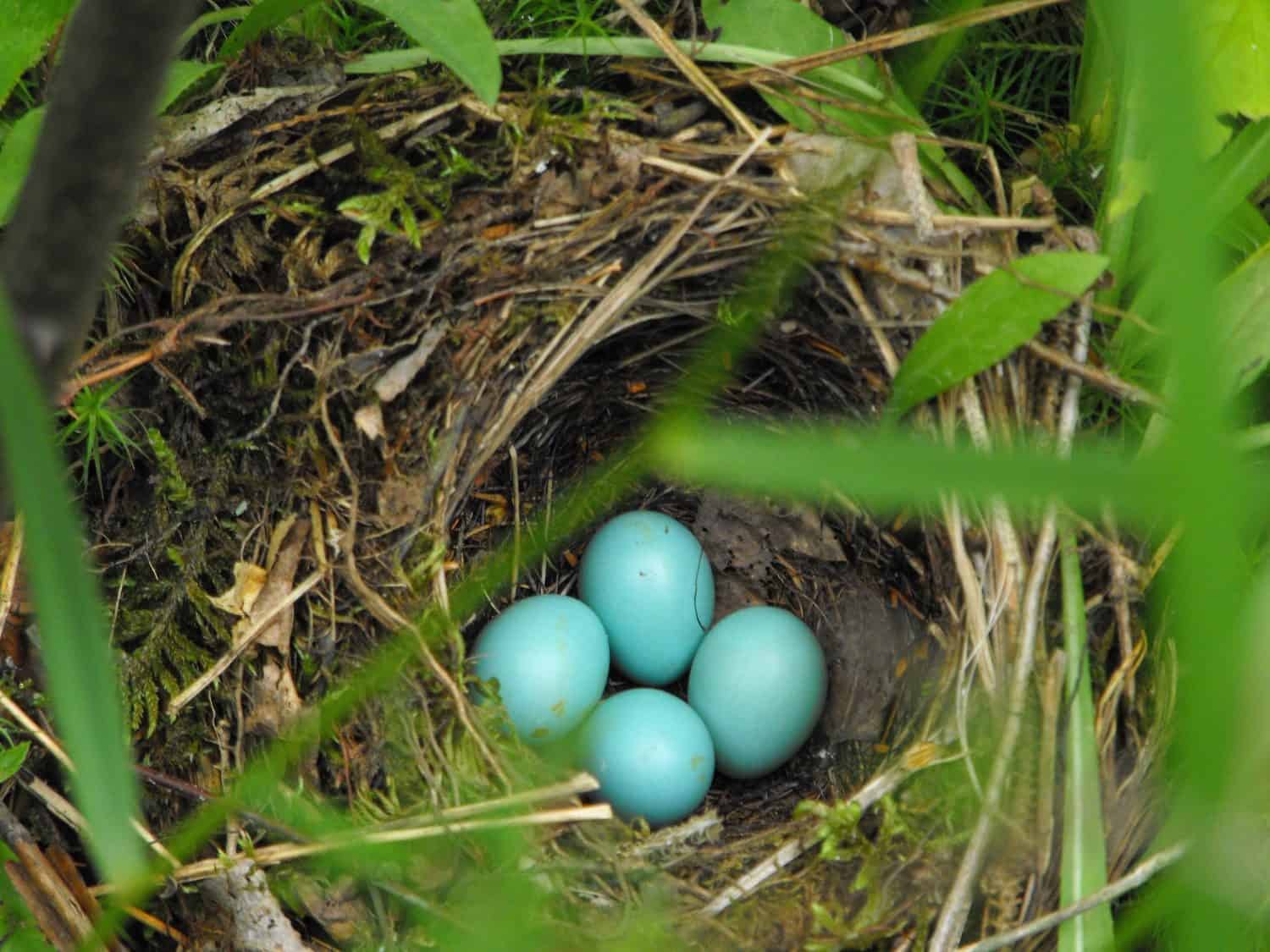
The eggs of the hermit thrush are light blue, sometimes with brown spots.
©Nila Randell/Shutterstock.com
Hermit thrushes may have one or two broods each year. Each brood may contain from three to six light blue eggs, sometimes with brown spots. The female incubates the eggs for 11 to 13 days while the male delivers food and defends the nest. The altricial chicks may be helpless and naked when they hatch, but they leave the nest after just 10 to 15 days.
Appearance
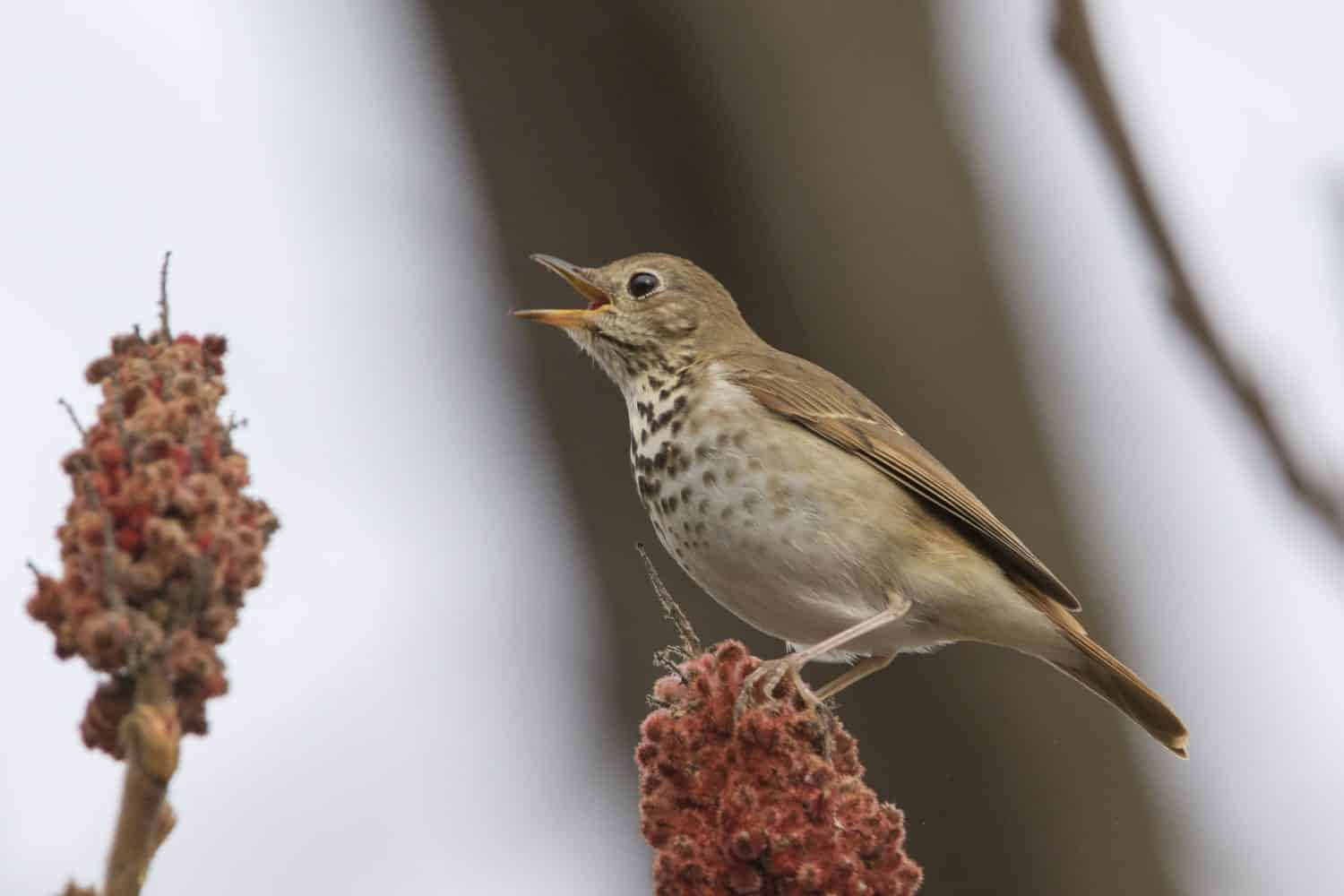
Male and female hermit thrushes look the same, though males are most likely to sing.
©Mircea Costina/Shutterstock.com
Hermit thrushes measure roughly 6 to 7 inches in length, roughly the size of an eastern bluebird. They can have wingspans up to nearly 12 inches. These mostly brown birds have reddish tails and light-colored underparts with dark spots on the breast. They have rounded heads and slightly stocky bodies. They have a thin white line that rims their eyes, and their dark bills have a pinkish base. Their dainty legs and feet are also pinkish in hue. These birds do not exhibit sexual dimorphism. Both males and females have a similar appearance.
Are Hermit Thrushes Rare?
The IUCN Red List of Threatened Species lists the Hermit Thrush as a species of Least Concern. The estimated population of this bird equals approximately 72 million mature individuals. The species has an extensive range and stable numbers. It is not considered rare.
The photo featured at the top of this post is © Andrii from AndriiS's Images, MichaelStubblefield from Getty Images/ via Canva.com
Thank you for reading! Have some feedback for us? Contact the AZ Animals editorial team.



